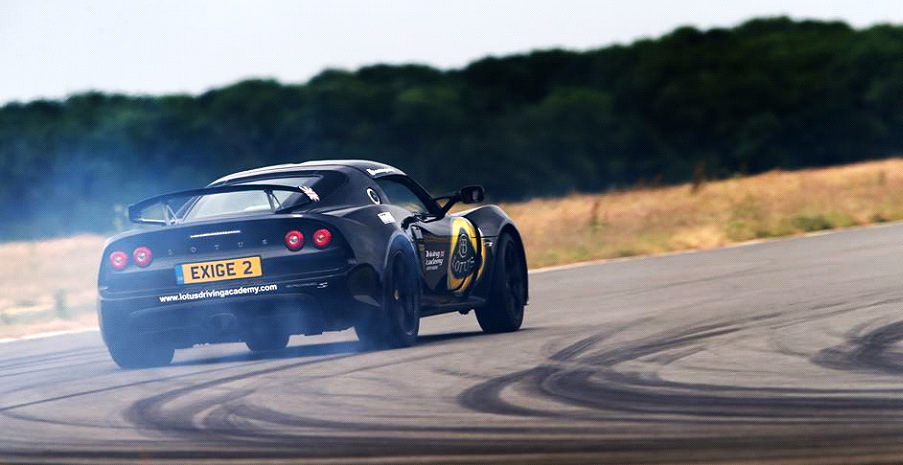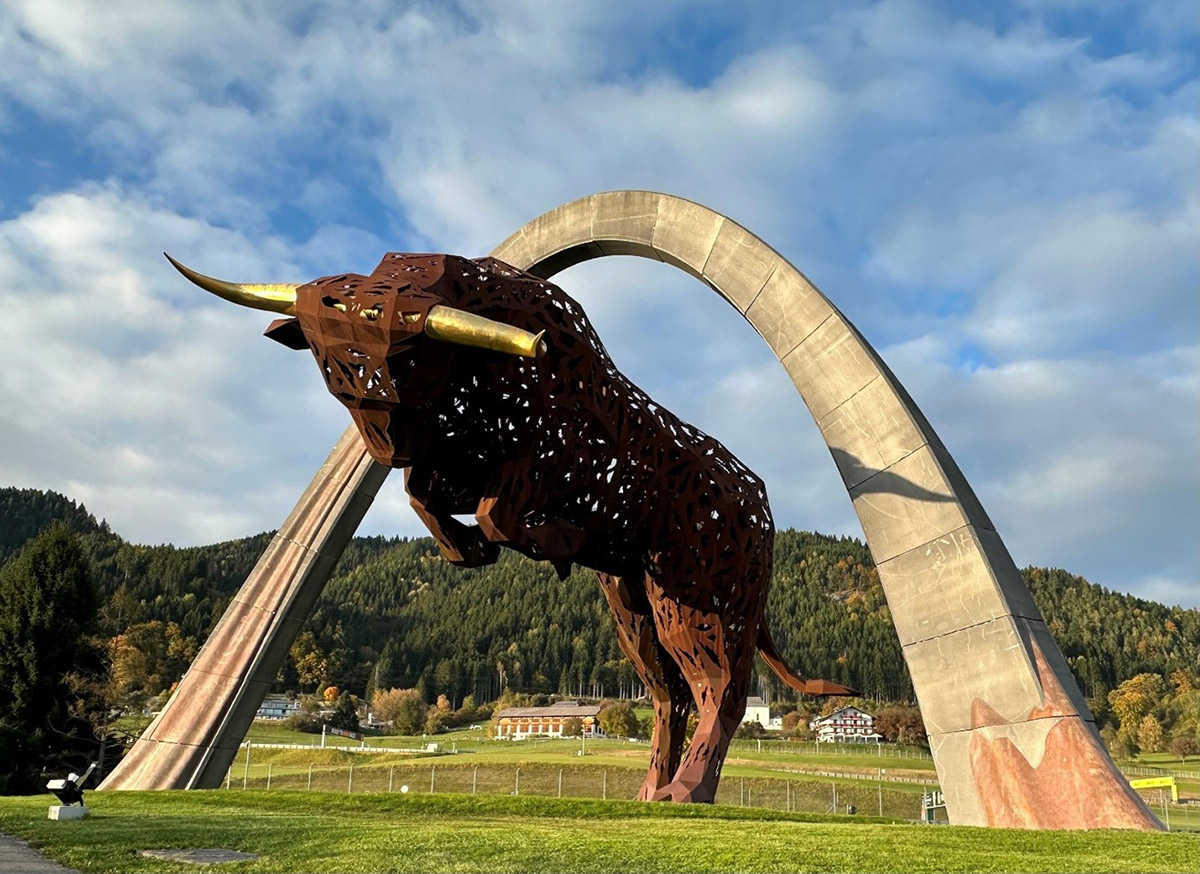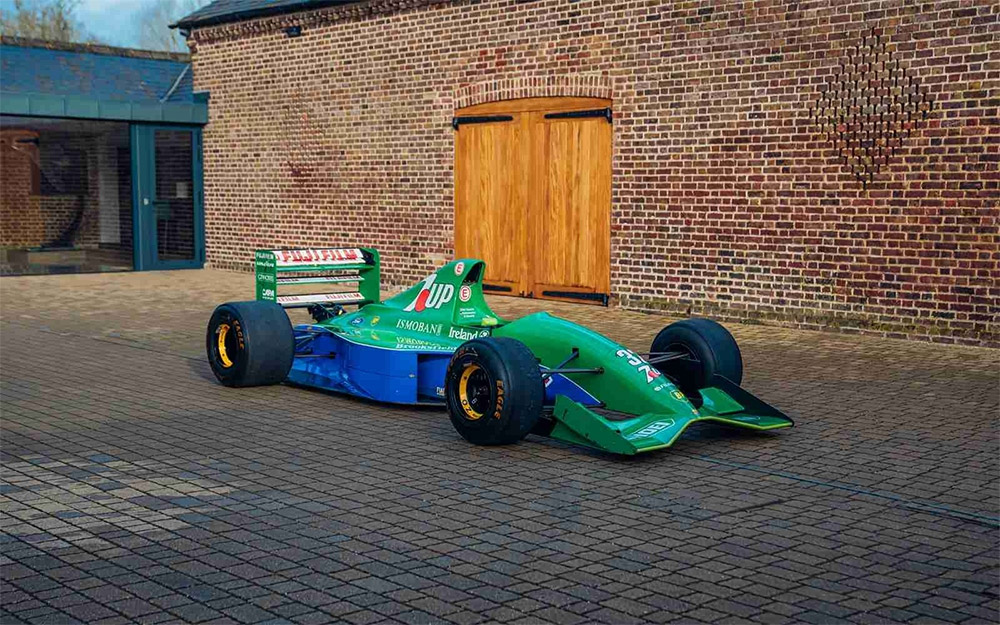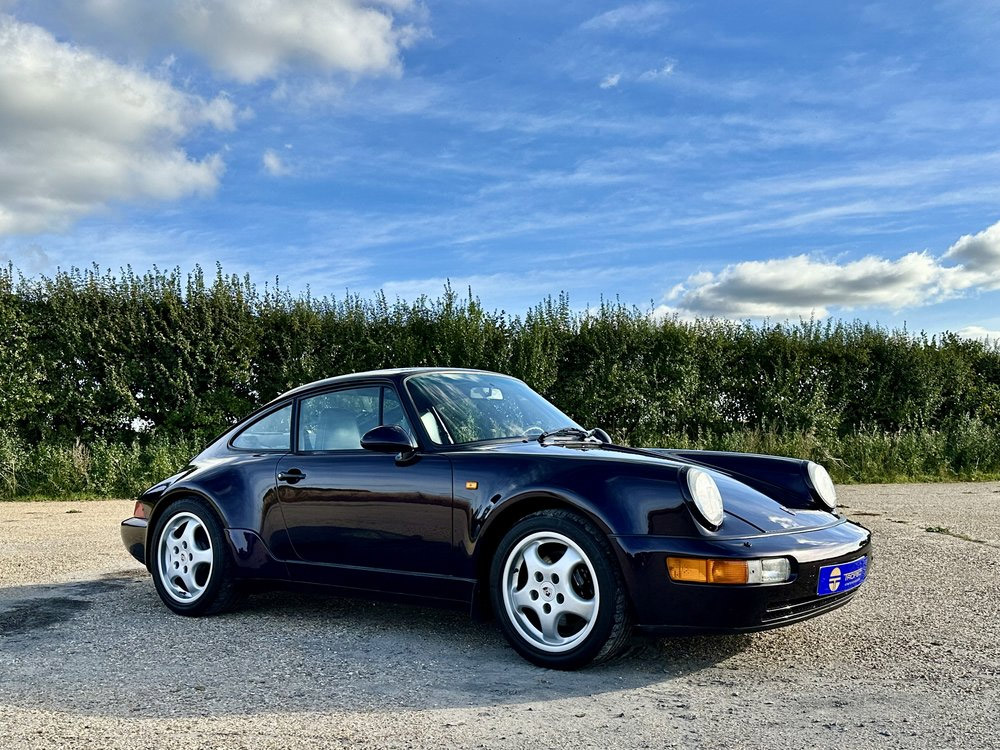The Porsche Track Experience arrived in Styria with a singular brief—maximize laps and learning. Manthey’s crew set the tone early: punctual registration, mandatory drivers’ briefing, and a “rolling track walk” before green flag running. The day alternated between street‑car sessions and race‑car sessions, so everyone had room to work without traffic turning into a moving chicane. Lunch? Porsche hospitality, right by pit lane—fast refuel for drivers and cars alike.
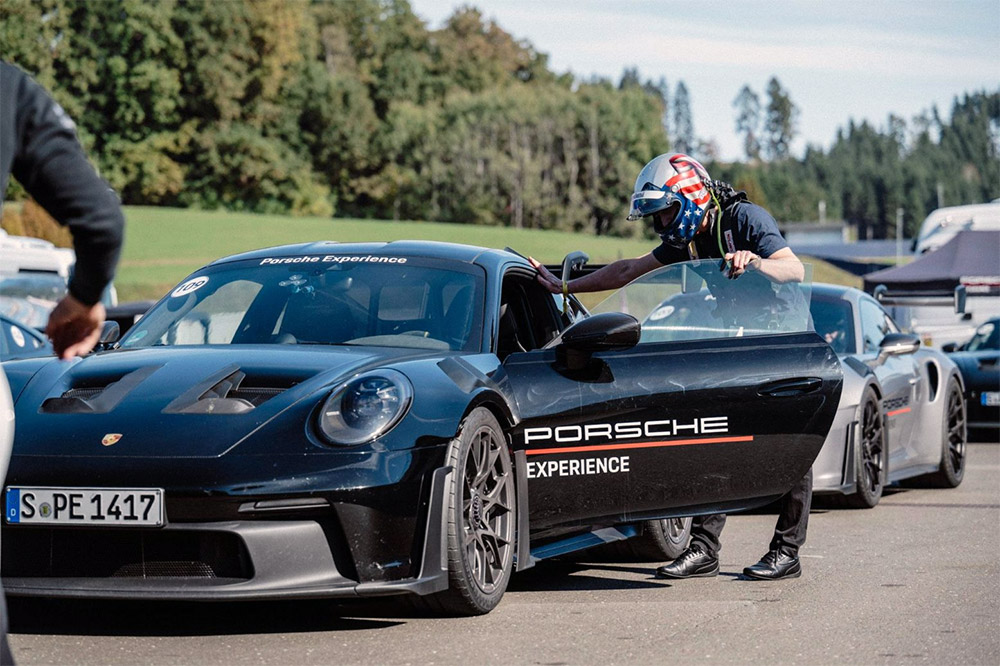
The Speed Journal sent Jeff Francis to take the wheel and report back. His summary was simple: this place rewards commitment and precision, with just enough forgiveness to keep you chasing the next tenth.
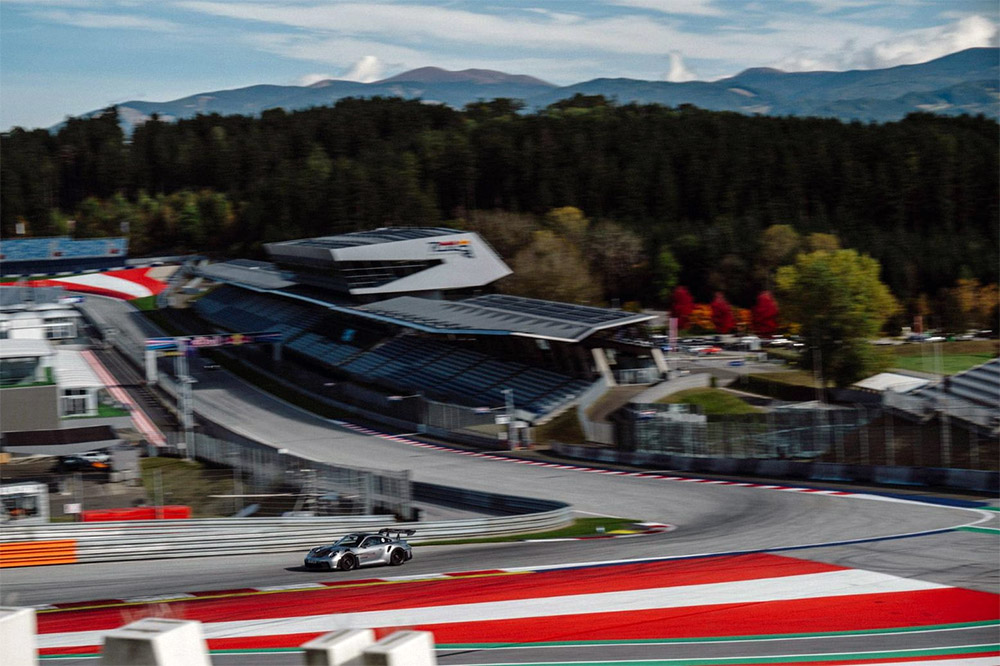
The place
The Red Bull Ring sits in a broad Styrian valley ringed by forested slopes and tidy farms. It’s one of those circuits where you look up from the braking markers and see a postcard—rolling hills, church spires, and the kind of crisp Alpine light that sharpens curbs and apexes. On the track map it’s compact; in person it breathes with elevation, big stops, and deceptively simple corners.
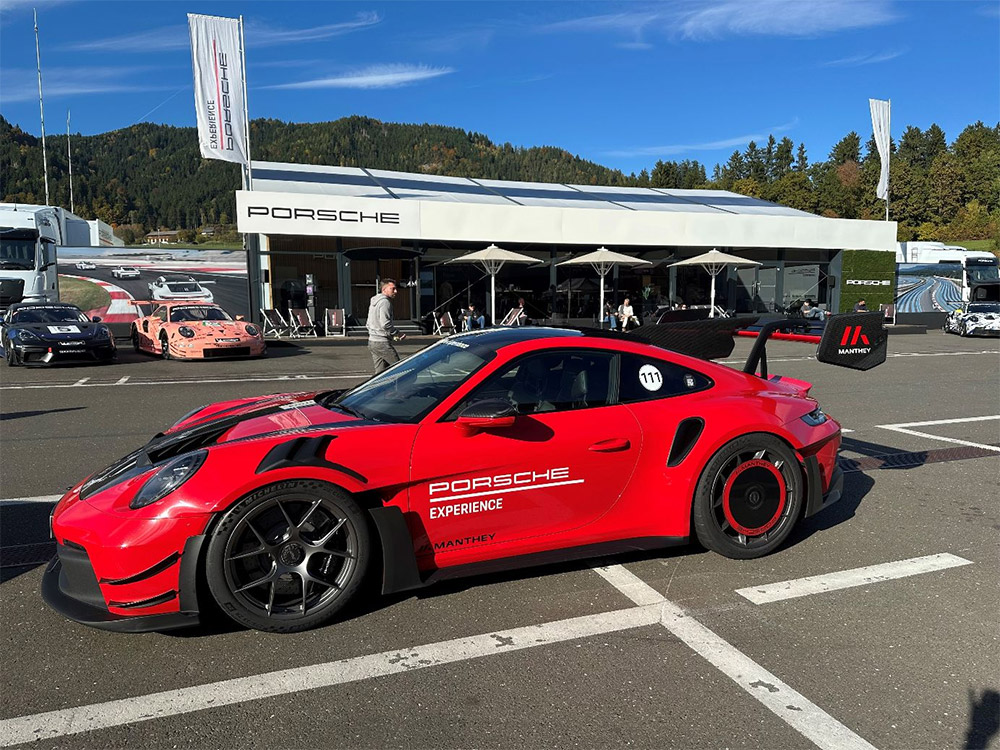
Today’s Grand Prix configuration runs 4.318 km with 10 turns, a short lap that compresses speed, braking, and traction management into tight windows. It’s a circuit of contrasts: long blasts into heavy braking, then a rhythm section that demands patience with the throttle.
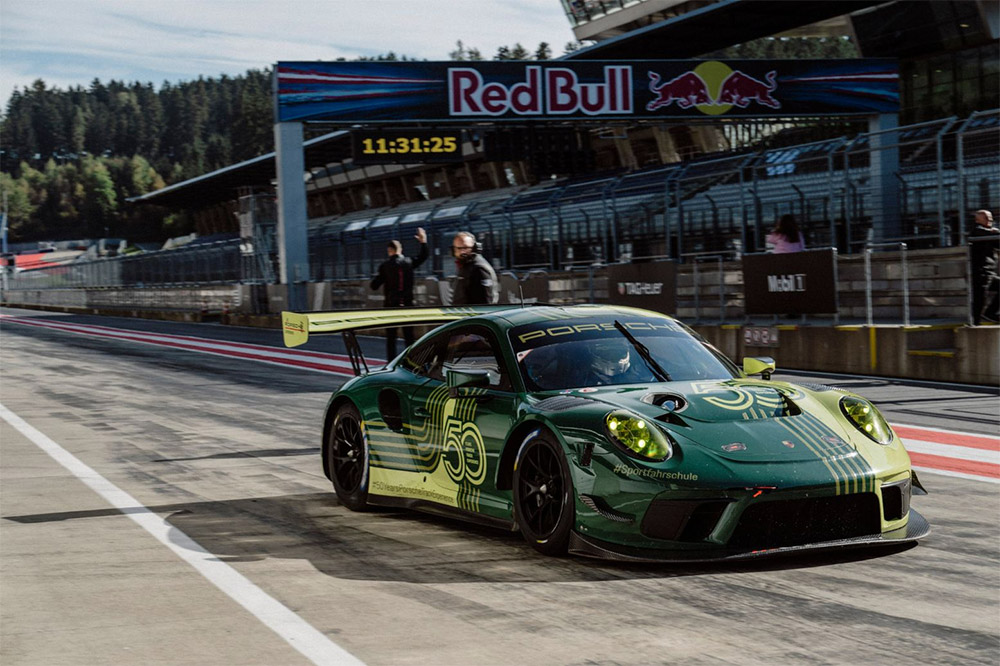
Red Bull’s fingerprints are everywhere. Dietrich Mateschitz bought the mothballed A1‑Ring, rebuilt it, and reopened it in 2011 as the Red Bull Ring—an investment that returned Formula 1 and MotoGP to Spielberg and turned the facility into a year‑round motorsport campus. The ring’s lineage traces back to the long, ultra‑fast Österreichring of 1969; the intermediate era carried the A1‑Ring name in the late 1990s and early 2000s.
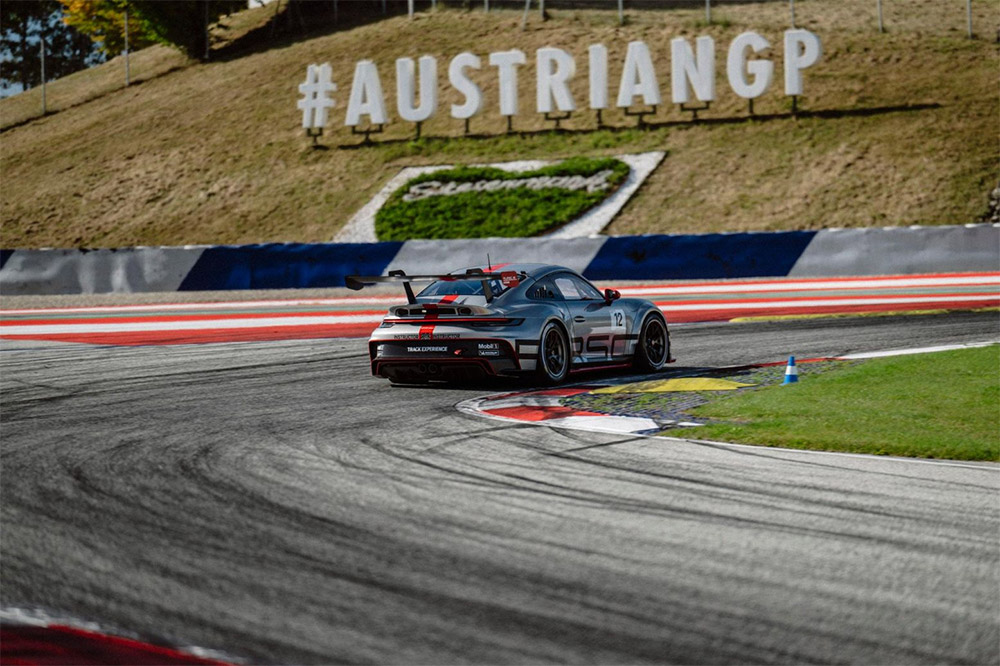
F1’s Austrian Grand Prix is a fixture here, and MotoGP packs the amphitheater each summer—modern heroes writing new chapters on ground that once sent flat‑out prototypes scything across the countryside.
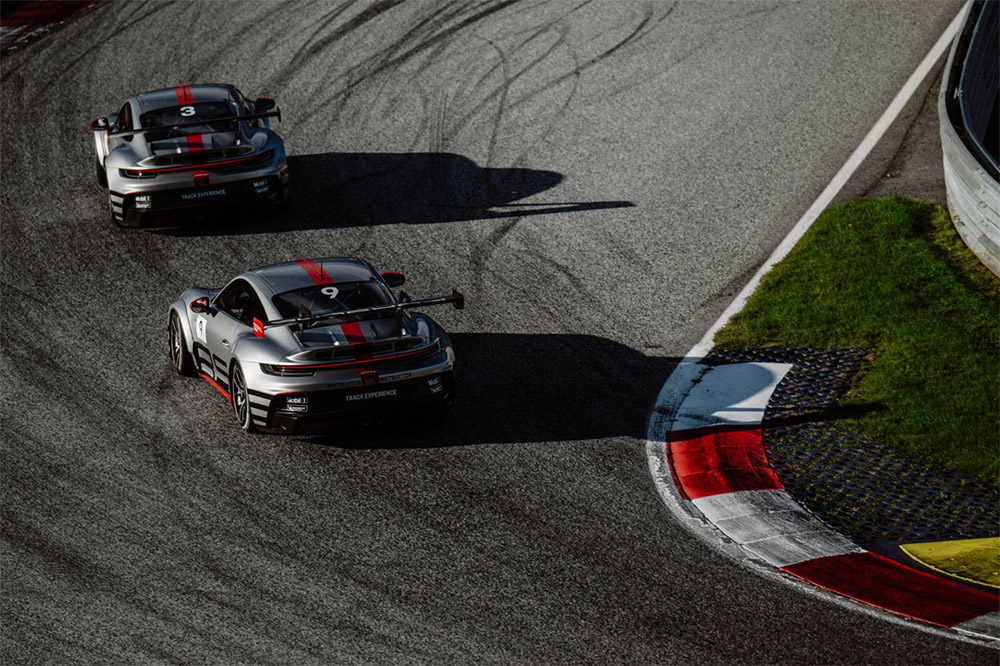
The program
Manthey’s schedule prioritized seat time. Forty‑minute open sessions ran without interruption, and the day was split so Porsche street cars (GT3, GT3 RS, GT4, GT4 RS only) alternated with Porsche race cars. The format worked. Heat cycles were clean, traffic predictable, and drivers could build pace without constantly catching cars on cool‑down laps.
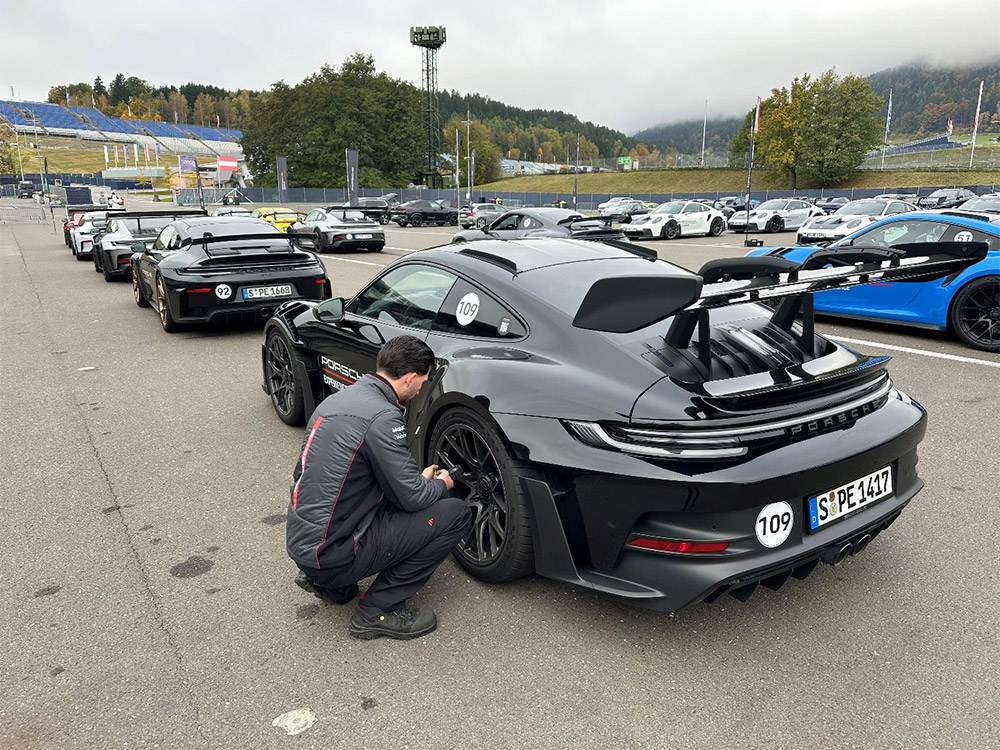
Between sessions, Porsche technicians swarmed the paddock. Tires inspected, pressures bled to targets, and discs and pads were inspected before the cars went back out. Midday, the front pads on our car were swapped—one brief bedding lap later, the pedal was rock‑solid and the car was ready to attack again. The orchestration felt like a race weekend in miniature, scaled for a customer track experience but executed with factory calm.
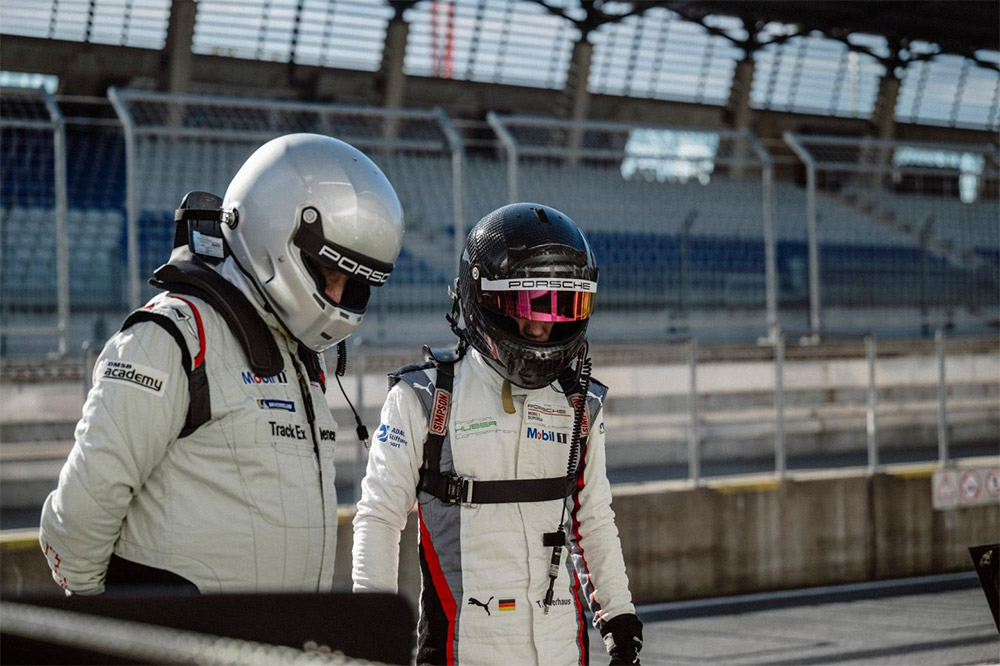
Porsche had also staged other Track Experience programs on preceding days, a ladder of formats aimed at everyone from newcomers to experienced racers—part of the brand’s broader “From Driver to Racer” approach.
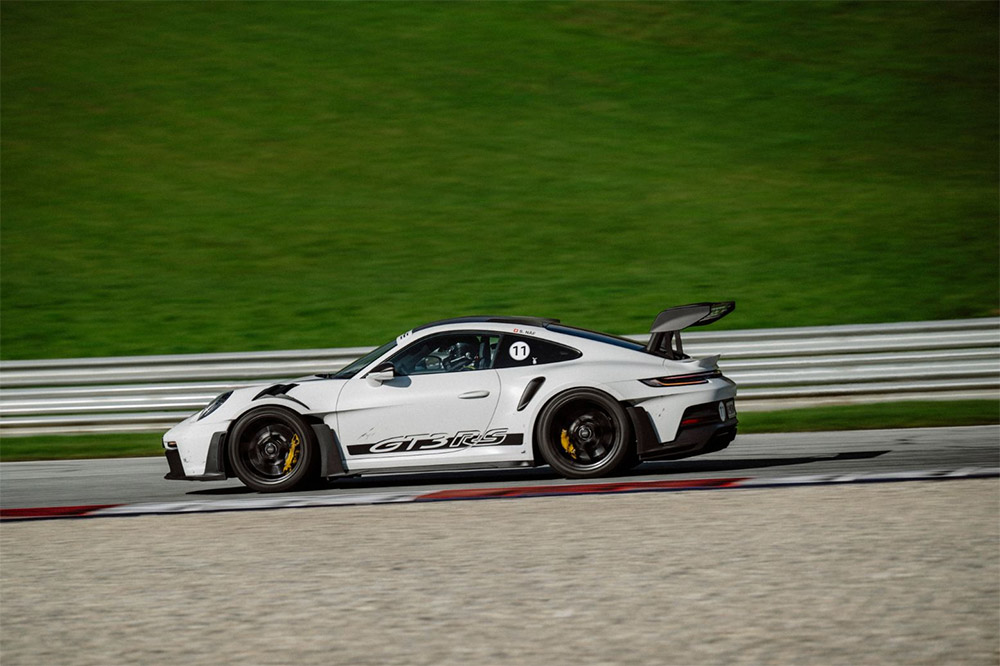
The car you see everywhere
If the paddock had a uniform, it was Weissach‑spec aero. The current 911 GT3 RS (992) was easily the most common car on track. There’s good reason. Its party trick is aero that actually works for real drivers: continuously adjustable elements up front and a two‑part rear wing with a DRS‑style flap that together make ~409 kg of downforce at 200 km/h and about 860 kg at 285 km/h—a staggering number for a road‑legal machine. Steering‑wheel knobs let you trim compression/rebound, differential, and aero without diving into a laptop. On a circuit with multiple big stops and medium‑speed direction changes, the GT3 RS feels like it’s stapled to the asphalt yet still rotates cleanly when you trail brake deep.
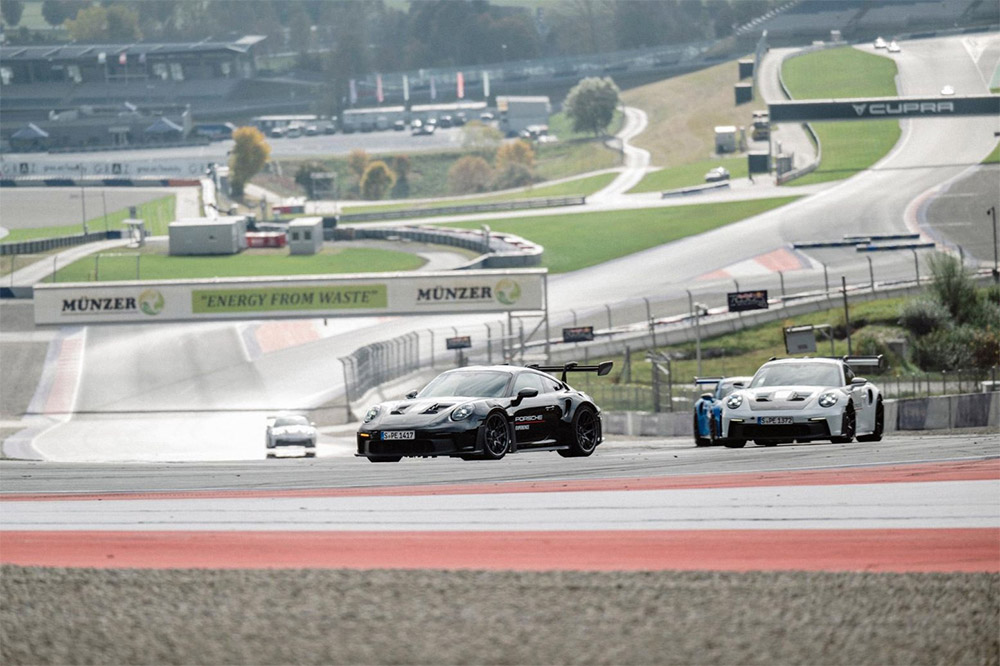
How the Red Bull Ring drives
Turn 1 is about bravery on exit; the track falls away and punishes greedy throttle with wheelspin over the curb. The uphill run to the tight right‑hander rewards engines that pull hard in the midrange and drivers who can brake late but straight. The following downhill complex teaches restraint—miss the first apex by a foot and the time loss echoes all the way to the next straight. Hit it right and the car floats, neutral and settled, carrying speed in a way that feels more Spa than short lap. The result is a rhythm that flatters cars with traction and drivers who can manage tires through long stints.
It’s a short lap, but never a boring one; the terrain gives the place personality that CAD alone can’t.
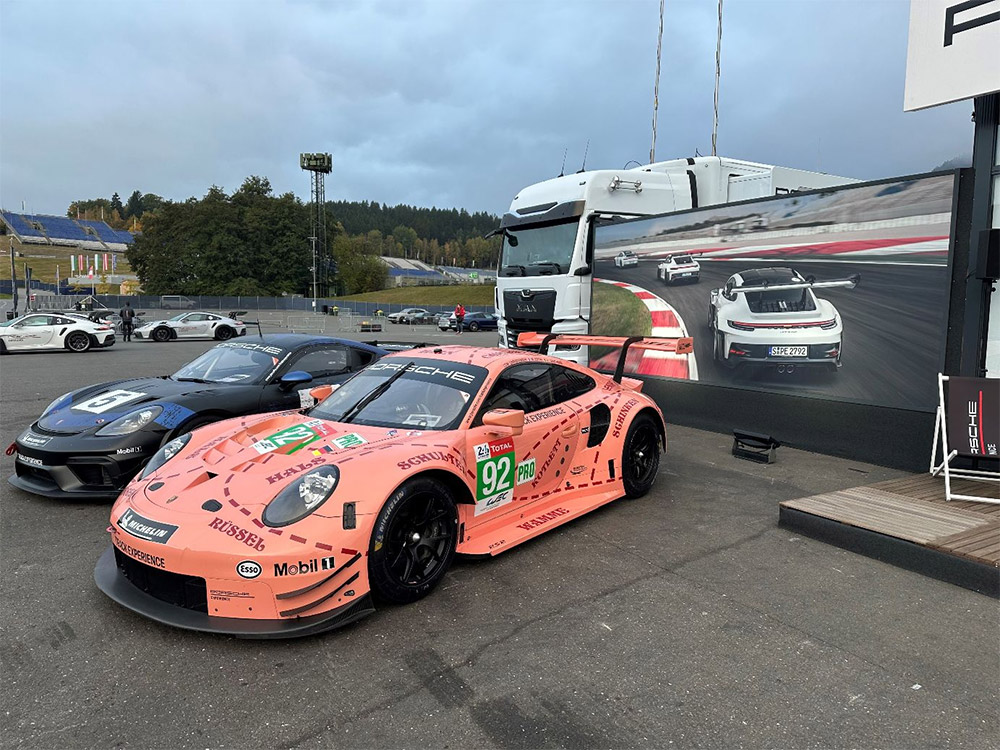
A “Pink Pig” in the conversation
Talk Porsche in Austria and racing history inevitably surfaces. On this day the legend that kept popping up in the paddock chatter was the “Pink Pig.” Porsche revived the 1971 917/20 butcher‑diagram livery for a 911 RSR at the 2018 24 Hours of Le Mans, where the #92 RSR (Kévin Estre, Michael Christensen, Laurens Vanthoor) won the GTE‑Pro class—an instant modern classic that connected fans straight back to Weissach’s deep archive.
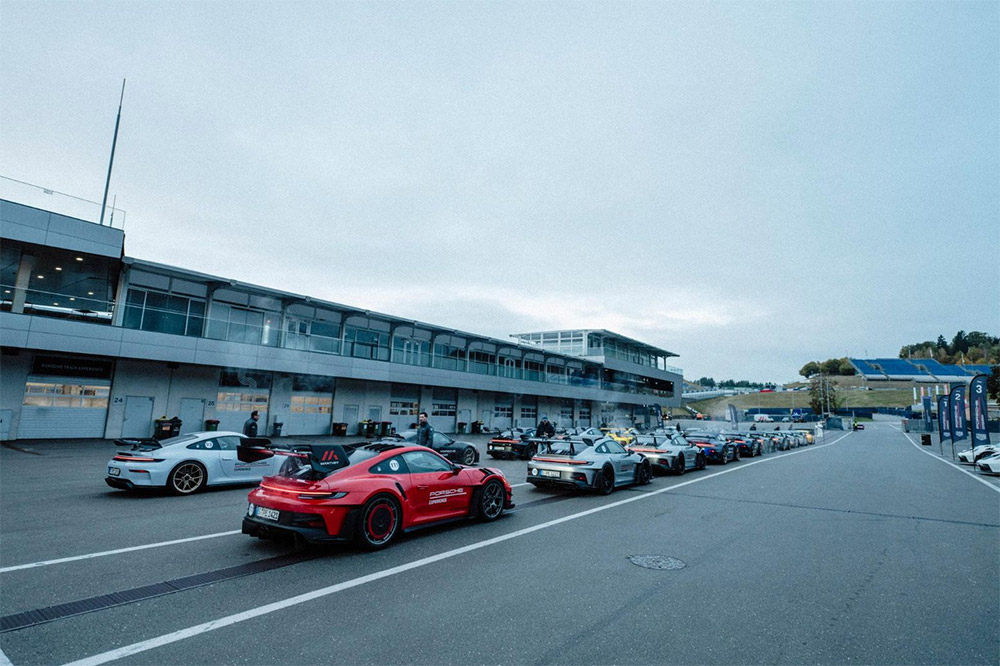
Why it works
The magic of this GT Trackday wasn’t just the laps. It was the way Manthey and Porsche layered professionalism over hospitality. The staff kept the cadence tight, the track time generous, and the learning continuous. Cars went out ready and performed flawlessly. You felt looked after without being handheld.
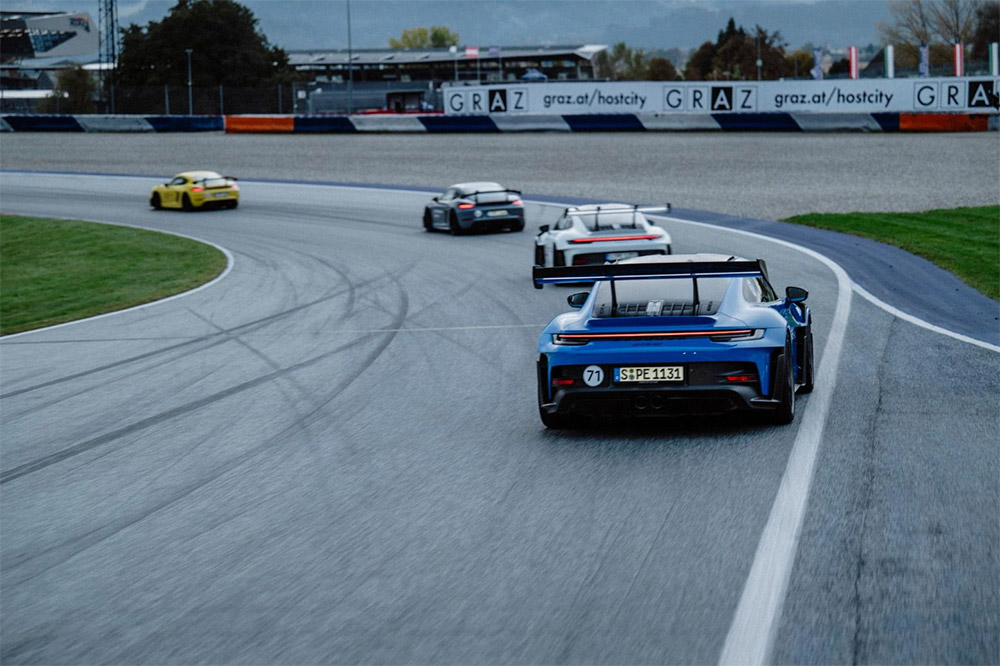
The setting ties it together. Spielberg’s landscapes soften the edges of a high‑velocity day and remind you why this valley has hosted top‑tier racing for decades. From the partner hotels perched above the circuit to the hospitality tucked into pit lane, the whole operation felt integrated with the place.
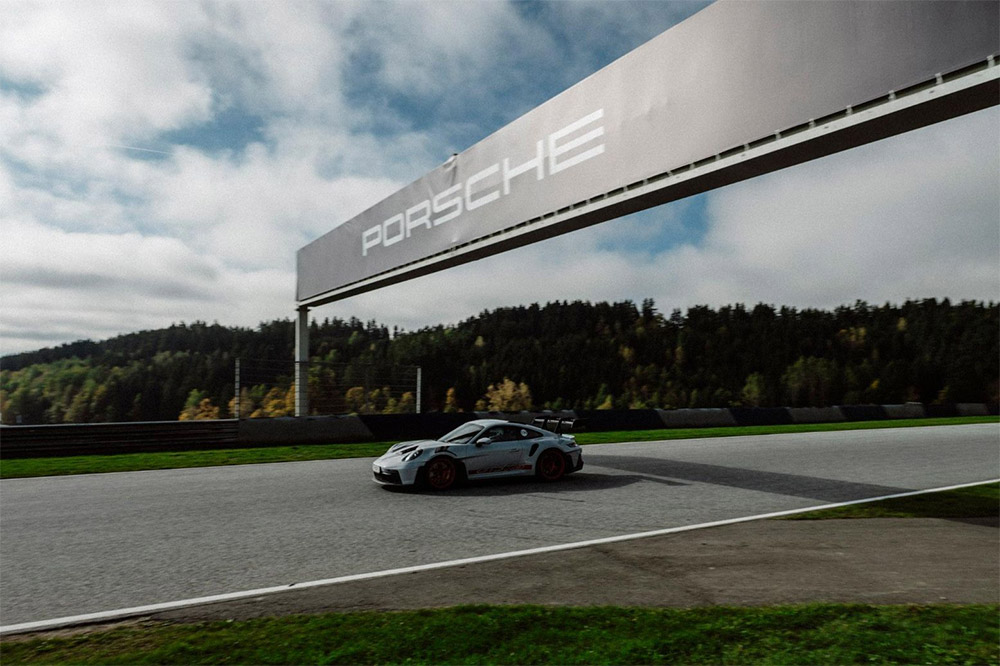
Bottom line
Porsche and Manthey turned a postcard‑pretty corner of Austria into a working classroom. The Red Bull Ring’s modern layout honors its wild past without the rough edges, and the format gives drivers meaningful time to improve. If your idea of a good day is long sessions, professional support, and a circuit that rewards precision, this is a trackday worth crossing borders for.
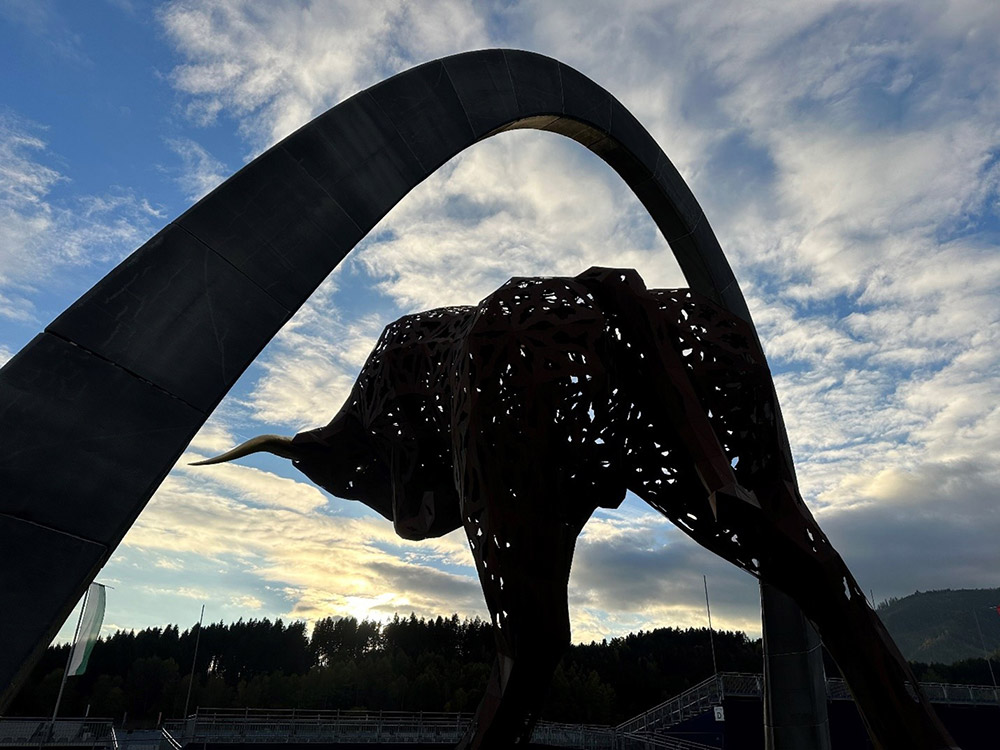
The Speed Journal would like to thank the Porsche Track Experience Team for another outstanding GT Trackday.


